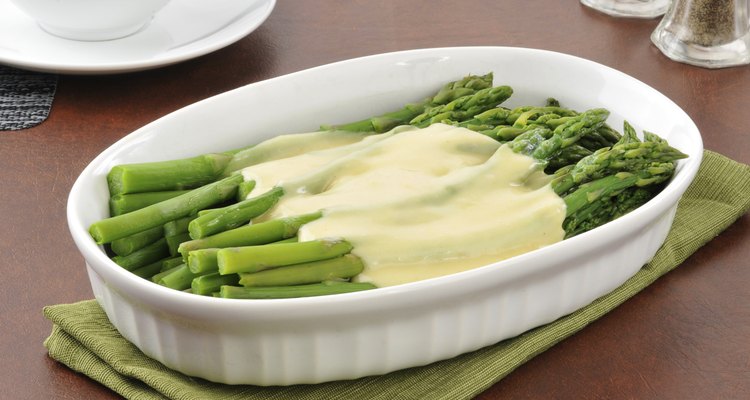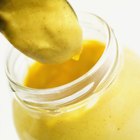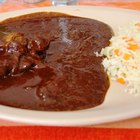
MSPhotographic/iStock/Getty Images
The mayonnaise you use on your sandwich and the Hollandaise that's spooned over your eggs Benedict are the closest of culinary siblings. Each is made by slowly whisking together an egg yolk with fat, vegetable oil for mayonnaise and butter in the case of hollandaise sauce. Traditionally, mayo is used for cold foods and hollandaise or its variations for hot dishes, but it doesn't necessarily need to be that way. You can heat mayonnaise and use it as a sauce, making it a sort of faux-hollandaise without the saturated fat.
Low, Steady Heat
Mayonnaise is tricky to heat, because it contains eggs. The eggs will cook if they're heated too aggressively, so the secret is low, steady heat. Bring water to a gentle simmer -- not a boil -- in a small saucepan, and set a heatproof bowl on top with the mayonnaise in it. Whisk the mayo continuously until it's hot, then spoon it over your food. Heated mayonnaise doesn't have the buttery richness of hollandaise, which is rather the point, but its more neutral flavor gives you room for creativity. Add citrus, saffron, garlic, curry powder or other flavor accents to custom-tailor the sauce to your food.
About Food Safety
There's a persistent myth that mayonnaise puts you at high risk for food-borne illness if it's not kept cold. In truth, commercial mayonnaise is not only pasteurized, it's acidic enough to kill bacteria on contact. Homemade mayonnaise doesn't have that advantage, so it must be heated until it reaches 160 degrees Fahrenheit when tested with an instant-read thermometer. Both commercial and homemade mayonnaise should be kept at 140 F or above until they're served to prevent bacterial growth.
Related Articles
How to Use Yogurt or Sour Cream Instead ...

How to Fix Mayo With Broken Emulsion

How to Make a Mayonnaise Facial Mask

How to Replace Eggs With Mayonnaise

Can You Refreeze Cooked Spaghetti Sauce ...

How to Make Fish Taco Sauce

Is It Dangerous to Leave a Sandwich ...

How to Skim Grease in Sauce

What Is Balkan Yogurt?

Can You Make Chocolate Ganache Frosting ...

How to Make Cuban Sandwiches

Almond Oil Cooking Substitution

Substitutes for Walnut Oil

Why Does a Sauce Curdle?

What Sauce to Serve With Deep-Fried ...
Is It Safe to Reuse Your Cooking Oil to ...

How to Bake Sicilian Ziti

The History of Bearnaise Sauce

How to Cook Lean Hamburgers

How to Make Mole Sauce
References
Writer Bio
Fred Decker is a trained chef and prolific freelance writer. In previous careers, he sold insurance and mutual funds, and was a longtime retailer. He was educated at Memorial University of Newfoundland and the Northern Alberta Institute of Technology. His articles have appeared on numerous home and garden sites including GoneOutdoors, TheNest and eHow.
Photo Credits
MSPhotographic/iStock/Getty Images